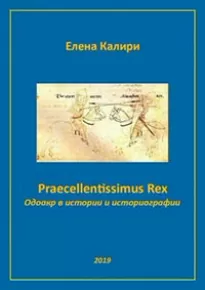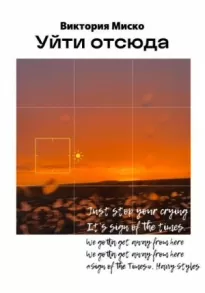Fischer V.T., Noricum, Mainz 2002.
Frank T., An Economie Survey of Ancient Rome, V, Rome and Italy of the Empire, Paterson New Jersey 1959.
Gaggero G., La fine dell'impero romano d'Occidente nell'interpretazione di Procopio, in Studi in onore di A. Biscardi, V, Milano 1984, 87–120.
Gamber K., Die Severins-Vìta als Quelle fur das gottesdienstliche Leben in Norikum wâhrenddes V. Jh., RQ 65, 1970, 145–157.
Garollo G., Teoderico re dei Goti e degl'italiani, Firenze 1879.
Garzya A., Teoderico a Bisanzio, in Carile A. (a cura di), Teoderico e i Goti tra Oriente e Occidente, Ravenna 1995, 341–351.
Gaudenzi A., L'opera di Cassiodoro a Ravenna, in Atti e memorie della Reale deputazione di storia patria per le province di Romagna, III s., Bologna 1886, IV, 426–463.
-, Sui rapporti tra l'Italia e l'impero d'Oriente, 476–554, Bologna 1888.
Gautier E.F., Genséric roi des Vandales, Paris 1932.
Geertman H., L'arredo della ecclesia Cornutianensis. Annotazioni intorno alla donazione di Flavius Valila, in Brandt O. — Pergola Ph. (edd.), Marmoribus vestita. Miscellanea in onore di Federico Guidobaldi. Studi di Antichità cristiana 63, Città del Vaticano, Pontificio Istituto di Archeologia cristiana 2011, 599–611.
Genser K., Die landliche Besiedlung undLandwirtschaft in Noricum wdhrend der Kaiserzeit (bis einschliefilich 5. Jahrhundert), in Bender H. — Wolff H. (Hrsgg.), Landliche Besiedlung und Landwirtschaft in den Rhein-Donau Provinzen des rômischen Reiches, Espelkamp 1994, 331–376.
Giardina A., Le due Italie nella forma tarda dell'impero, in AA.VV., Società romana e Impero tardo antico, I: istituzioni, ceti, economie, Bari 1986, 1-36.
-, Cassiodoro politico, Roma 2006.
Gillct A., Rome, Ravenna and the last Western Emperors, PBSR 69, 2001, 131–167.
Giovannini F., Le trasformazioni demografiche in Italia tra IV e V secolo, in Delogu P. — Gasparri S. (a cura di), Le trasformazioni del V secolo. L'Italia, i barbari e l'Occidente romano. Atti del seminario di Poggibonsi, 18–20 ottobre 2007, Tumhout 2010, 431–454.
Girotti B., Antemio genero del divo Marciano: su Jordanes, Romana, 336–340, RSA38, 2008, 201–209.
-, Ricerche sui Romana di Jordanes, Bologna 2009.
Gitti A., Eudossia e Genserico, ASI s. 7, 4, 1925, 3-38.
Giuffrida Manmana C., Alla corte dell'imperatore. Autorità civili, militari ed ecclesiastiche nella Tarda Antichità, Catania 2008.
Giunta F., Genserico e la Sicilia, Kokalos 2, 1956, 104–141.
Goffart W., From Roman Taxation to Medieval Seigneurie: Three notes, Speculum 47, 1972, 165–187.
-, Caput and Colonate. Toward a History of late Roman Taxation, Toronto 1974.
-, Barbarians and Romans (A. D. 418–584): The Techniques of Accomodation, Princeton 1980.
-, After the Zwettel Conference: Comments on the "Techniques of Accomodation, in Wolfram H. — Schwarcz A. (a cura di), Anerkennung und Integration: zu den wirthschaftlichen Grundlagen der Vôlkerwanderungszeit, 400–600, Wien 1988, 79–81.
-, Barbarian Tides. The Migration Age and the Later Roman Empire, Philadelphia 2006.
-, The Barbarians in Late Antiquity and how they were accommodated in the West, in Noble T.F.X. (a cura di), From Roman Provinces to Medieval Kingdoms, Abingdon-New York 2006, 235–261.
Goltz A., Siziliens und die germanen in der Spdtantike, Kokalos 43–44, 1997–1998, 1, 209–242.
Grossi Gondi F., s.v. Comes in DE, 1,1, 468–524.
Gruber J., Anonymus Valesianus, Lexicon des Mittelalters I, 1980.
Gualandri I., Figure di barbari in Sidonio Apollinare, in Lanata G. (a cura di), Il tardoantico alle soglie del duemila: diritto, religione, società, Pisa 2000, 105–129.
Gusso M., Sull'imperatore Glicerio (473–474), SDH1 58, 1992, 168–193.
-, Contributi allo studio della composizione e delle fonti del Chronicon di Marcellino cornes, SDHI 61, 1995, 557–622.
Haberi J., The last of Roman Noricum, in Hawkes C. and S. (Eds.), Greeks, Romans and Celts, London 1973, 97-149.
Hannestad K., Les forces militaires d'après la Guerre Gothique de Procope, C&M 21, 1960,136–183.
Harries J., Sidonius Apollinaris and the fall of Rome, AD 407–485, Oxford-New York 1994.
Hartmann L.M., Anonymus Valesianus II, RE 1, 1893, 2334.
-, Geschichte Italiens, I, Gotha 1897.
Heather P., The Goths, Oxford 1996.
-, The Fall of the Roman Empire. A New History of Rome and the Barbarians, London 2005, tr. it. Milano 2006.
Henning D., Periclitans res publica. Kaisertum und Eliten in der Krise des Westròmischen Reiches 454/493 n. Chr, Stuttgart 1999.
Hirschfeld O., Der Grundbesitz der romischen Kaiser in den ersten drei Jahrhunderten, Klio 2, 1902, 311 ss.
Hodgkin Th., Italy and her Invaders, II, Oxford 1880.
Holder-Egger O., Untersuchunghen iiber einige annalistische Quellen zur Geschichte des Junften und sechsten Jahrhunderts, Neues Archiv der Gesell. fur altere deutsche Geschichtskunde 1876, 213–268 (Die Ravennater Annalen).
Holm A., Storia della Sicilia nell 'antichità, 3, tr. it. di G. Kimer, Torino 1911.
Humphries M., Roman Senators and Absent Emperors in Late Antiquity, ACTA 17, 2003, 27–46.
Ibba A., Fra Cartagine e Bisanzio: Godas, i Vandali, i Mauri e i Sardi in Sardegna, in Montecchio L. (a cura di), Tradimento e traditori nella Tarda Antichità, Perugia 2017, 115–131.
Jones A.H.M., The Constitutional Position of Odoacer and Theoderic, JRS 52, 1962, 126–130.
A.H.M. Jones, The Later Roman Empire, 284–602, Oxford 1964, tr. it. Il tardo Impero Romano, Milano 1974.
Kacgi W.E. jr., Byzantium and the Decline of Rome, Princeton 1968.
-, Gli storici proto-bizantini e la Roma del Vsecolo, RSI 88, 1976, 5–9.
Karlowa O., Ròmische Rechtsgeschichte, Leipzig 1885.
Kaser M., Das ròmische Privatrecht, 2, München 1959.
Kislinger E., Zwischen Vandalen, Goten undByzantinern: Sizilien im 5. undfriihen 6. Jahrhundert, Byz. et slav. Cracoviensia 2, 1994, 31–51.
-, La Sicilia tra Vandali e impero romano nel V secolo. La marginalità del centro, in Aiello V. (a cura di), Guerrieri, mercanti e profughi nel mare dei Vandali, Messina 2014, 15–34.
Kônig I., Aus der Zeit Theoderichs des Grossen. Einleitung, Text, Übersetzung und Kommentar einer anonymen Quelle, Darmstadt 1997.
Koschaker P., Recensione a F. Vassalli, Concetto e natura del fisco, ZSS 32, 1911, 408.
Krànzlein A., s.v. Patrimonium in RE, Suppl. X, 497–501.
Kraus F.F., Die Miinzen Odovacars unddes Ostgotenreiches in Italien, Halle 1928.
Krautschick S., Zwei Aspekte des Jahres 476, Historia 35, 1986, 344–371.
-, Ricimer — ein Germane als starker Mann in Italien, in Scardigli B. — Scardigli P. (a cura di), Germani in Italia, Roma 1994, 269–287.
Kulikowski M., Marcellinus "ofDalmatia" and the Dissolution of the fifth-century Empire, Byzantion 72, 2002, 177–191.
La Rocca S., Le incursioni vandaliche in Sicilia (440–491). Appunti, Girgenti 1917.
Lacam G., Ricimer. Un Barbare au service de Rome, Paris 2008.
Ladstàtter S., Kontinuitat trotz Katastrophe: zur Spatantike im siidlichen Noricum am Beispiel des frühchristlichen Pilgerheiligtums aufdem Hemmaberg, in Bauer F.A. — Zimmermann N. (Hrsgg.), Epochenwandel? Kunst und Kultur zwischen Antike und Mittelalter, Mainz 2001, 57–66.
Lamma P., Teoderico, Brescia 1950.
Lancia di Brolo D.G., Storia della Chiesa in Sicilia, 1, Palermo 1880.
Laniado A., Some problems in the sources for the reign of the emperor Zeno, BMGS 15, 1991, 147–173.
Le Nain de Tillemont L.S., Histoire des Empereurs, Ven. 1739.
Licandro O., L'Occidente senza Imperatori. Vicende politiche e costituzionali nell'ultimo secolo dell'Impero Romano d'Occidente, Roma 2012.
Liebcnam W., s.v. Res privata, in RE I, A.l, c. 631.
Lippold A., s.v. Zenon aus Isaurien, RE X A 1, 1972, 149–213.
Lizzi Testa R., Senatori, popolo, papi: il governo di Roma al tempo dei Valentiniani, Bari 2004.
Lotter F., Severinus und die Endzeit der ròmicher Herrschaft an der oberen Donau, DA 24, 1968, 309–339.
-, Inlustrissimus vir Severinus, DA 26, 1970, 200–207.
-, Severinus von Noricum. Legende und historische Wirklichkeit, Stuttgart 1976.
-, Zur Interpretation hagiographischer Quellen. Das Beispiel der Vita Severini des Eugippius, MLatJb 19, 1985, 37–62.
Luiselli B., Note sulla perduta Historia Romana di Q. Aurelio Simmaco, StudUrb 49, 1975, 529–535.
-, Sul De summa temporum di Jordanes, RomBarb 1, 1976, 83–134.
-, Storia culturale dei rapporti tra mondo romano e mondo germanico, Roma 1992.
-, La cultura romana di fronte alla fine dell 'impero di Occidente e al primo regno germanico in Italia, in Scardigli B. — Scardigli P. (a cura di), Germani in Italia, Roma 1994, 289–305.
Luzzatto G., Breve storia economica d'Italia, Torino 1958.
Macbain, Odovacer the Hun? CPh 78, 1983, 323–327.
MacCormick M., Odoacer, Emperor Zeno and the Rugian Victory Legation, Byzantion47, 1977,221–222.
MacGeorge Р., Late Roman Warlords, Oxford 2002, 190–192.
Marini G., Ipapiri diplomatici, Roma 1905.
Markus R.A., The End of the Roman Empire: a Note on Eugippius, Vita Sancti Severini, 20, NMS 26, 1982, 1–7.
Marotta V., Liturgia del potere. Documenti di nomina e cerimonie di investitura fra principato e tardo impero romano, Ostraka 8, Napoli 1999.
Marquardt J., Ròmische Staatsverwaltung, 2, Leipzig 18813.
Martelli F., Osservazioni in margine al regno di Petronio Massimo, RSA 13–14, 1983–1984, 313–316.
Martroye F., Genserie la conquête vandale en Afrique et la destruction de l'Empire d'Occident, Paris 1907.
Masi A., Ricerche sulla res privata del princeps, Milano 1971.
Mastino A., La Sardegna cristiana in età tardoantica, in Id. — Sotgiu G. — Spaccapelo N. (a cura di), La Sardegna paleocristiana tra Eusebio e Gregorio Magno, Cagliari 1999, 293–294.
Mathisen R.W., The Third regnal Year of Eparchius Avitus, CPh 80, 1985,326–335.
-, Leo, Anthemius, Zeno and the extraordinary senatorial status in the late fifth century, ByzForsch 17, 1991, 191–222.
-, Roman Aristocrats in Barbarian Gaul. Strategies for Survival in an Age of Transition, Austin, TX, 1993.
-, Les Barbares intellectuels dans TAntiquité tardive, DHA23/2, 1997, 139–148.
-, Petronius Maximus (17 March 455 — 22 May 455), in De Imperatoribus Romanis. An Online Encyclopedia of Roman Emperors (http://www.roman-emperors.org/petmax.htm), 1997.
-, Provinciales, Gentiles and Marriages between Romans and Barbarians in the Late Roman Empire, JRS 99, 2009, 140–155.
-, Ricimer's Church in Rome: How an Arian Barbarian Prospered in a Nicene World, in Cain A. — Lenski N. (a cura di), The Power of Religion in Late Antiquity, 2009, 309–325.
-, Avitus (9/10 July 455-17/18 October 456), in De Imperatoribus Romanis. An Online Encyclopedia of Roman Emperors (https://www.roman-emperors.org/avitus.htm), 2011.
-, Les marriages entre Romaines et Barbare comme stratégie familiale pendant l'Antiquité tradive, in Badel Ch. — Settipani Ch. (a cura di), Les stratégies familiales dans l'Antiquité tardive, Paris 2012, 153–166.
Max G.E., Political Intrigue during the Reigns of the Western Roman Emperors Avitus and Majorianus, Historia 28, 1979, 225–237.
Mazza M., / Vandali, la Sicilia e il Mediterraneo nella Tarda Antichità, Kokalos 43–44, 1997–1998, 107–138.
Mazzarino S., Si può parlare di rivoluzione sociale alla fine del mondo antico? in Il passaggio dall 'antichità al medioevo in Occidente, IX Settimana di Studi del CISAM, Spoleto 1961,410–425 (= Id., Antico, tardoantico ed èra costantiniana, 2, Roma-Bari 1974–1980, 431–445).
-, Tra due anniversari: 376–476, in La fine dell 'impero romano d'Occidente, Roma 1978, 169–180.
-, La fine del mondo antico, Milano 1988.
Mc Evoy M., Rome and the Transformation of the Imperial office in the late fourth-mid fifth centuries AD, PBSR 78, 2010, 151–192.
Microw Ch., Eugippius and the closing years of the province of Noricum Ripense, TAPhA 10, 1915, 166–187.
Miltner F., s.v. Vandalen, in RE, 8, 1, 1955, 298–335.
Modéran Y., La chronologie de la Vie de Saint Fulgence de Ruspe et ses incidences sur l'histoire de l'Afrique vandale, MEFRA 105, 1995, 135–188.
-, L'établissement territorial des Vandales en Afrique, AntTard 10, 2002, 87-122.
Momigliano A., Cassiodorus and the Italian Culture of his Time, PBA 41, 1955, 207–245 (= Secondo contributo alla storia degli studi classici e del mondo antico, Roma 1960, 192–229).
-, Cassiodorus and Italian Culture of his time, in Id., Secondo contributo alla storia degli studi classici e del mondo antico, Roma 1960, 191–229.
-, Gli Anicii e la storiografia latina del VI sec. d.C., in Id., Secondo contributo alla storia degli studi classici e del mondo antico, Roma 1960, 231–254.
-, La caduta senza rumore di un impero nel 476 d.C., ASNP 3, 2, 1973, 397–418 (= Id., in Sesto contributo alla storia degli studi classici e del mondo antico, I, Roma 1980, 159–179).
Mommsen Th., Bruchstücke des Johannes von Antiochia und des Johannes Malalas, Hermes 6, 1872, 323–383.
-, Ròmisches Staatsrecht, Leipzig 1888.
-, Ostgotische Studien, Neues Archiv der Gesellschaft fìir altere deutsche Geschichtskunde XIV, 1889,445 (= Id., Gesammelte Schriften, 6, 1907,428–430).
-, Chronica minora saec. IV. V. VI. VII, I–II, MGH IX e XI, Berolini 1892–1894.
-, in MGH AA 9, Chron. Min. 1, Berlin 1899.
Monneret de Villard U., Iscrizioni cristiane della provincia di Como anteriori al secolo XI, RAComo 65–66, 1912.
Moorhead J., The Laurentian Schism: East and West in the Roman Church, Church History 47, 1978, 125–136.
-, The Decii under Theoderic, Historia 33/1, 1984, 107–115.
-, Theoderic in Italy, Oxford 1992.
-, Totila the Revolutionary, Historia 49, 2000, 382–386.
Moreau J., Excerpta Valesiana, Lipsiae 1961.
Morosi G., L'invito di Eudossia a Genserico, Firenze 1892.
Muhlbergher S., The Fifth — Century Chroniclers. Prosper, Hydatius and the Gallic Chronicler of 452, Leeds 1990.
Nâf B., Senatorisches Standesbewutsein in spatròmischer Zeit, Zurich 1995.
Nagl A., s.v. Odoacer, in RE XVII2, 1937, 1888–1896.
-, s.v. Onoulf in RE XVIII1, 1939, 526–527.
Nathan G., The Last Emperor: the Fate of Romulus Augustulus, C&M 43, 1992, 261–271.
Neri V., Il 476 nella storiografia moderna, Felix Ravenna 111–112, 1976, 247–267.
-, La legittimità politica del regno teodericiano nell'Anonymi Valesiani Pars Posterior, in Teoderico e i Goti tra Oriente e Occidente, Ravenna 1995, 313–340.
O'Flynn J.M., Generalissimos of the Western Roman Empire, Alberta 1983.
-,A Greekon the Roman Throne: the Fate of Anthemius, Historia 40, 1991, 122–128.
Oeschsli W., Ü.ber die Historia Miscella lib. XII–XVIII und den Anonymus Valesianus II, Zürich 1873.
Oost S.I., Galla Placidia Augusta: a biographical Essay, Chicago-London 1968.
Oppedisano F., L'impero d'Occidente negli anni di Maioriano, Roma 2013.
Orestano R., s.v. Patrimonium principis, in NovDI XII, Torino 1965, 685–698.
Orlandi S., Epigrafia anfiteatrale dell'Occidente Romano VI. Roma. Anfiteatri e strutture annesse, con una nuova edizione e commento delle iscrizioni del Colosseo, Roma 2004.
-, Le iscrizioni del Colosseo come base documentaria per lo studio del senato tardoantico, in Lizzi Testa R. (ed.), Le trasformazioni delle élites in età tardoantica, Roma 2006, 311–324.
-, L'epigrafia romana sotto il regno di Odoacre, in Bonamente G. — Lizzi Testa R. (a cura di), Istituzioni, carismi ed esercizio del potere (IV–VI secolo), Bari 2010, 331–338.
Pace B., Arte e civiltà della Sicilia antica, 4, Roma 1949.
Palme B., Die Officia der Statthalter in der Spdtantike. Forschungsstand und Perspektiven, AntTard 7, 1999, 85-133.
Palmmann R., Die Geschichte der Vòlkerwanderung nach den Quellen, II, Gotha 1863.
Panciera S., Il precettore di Valentiniano III, in Stella C. — Valvo A. (a cura di), Studi in onore di A. Garzetti, Brescia 1996, 277–297.
Paschoud F., Roma Aetema. Etudes sur le patriotisme romain dans l'Occident latin à l'époque des grandes invasions, Neuchâtel 1967.
Pavan M., I valori della tradizione classica nell'insegnamento del Vivarium, in Flavio Magno Aurelio Cassiodoro, Soveria Mannelli 1986, 392–405.
-, Il Lucullanum e i rapporti romano-barbarici, in Hestìasis. Studi di Tarda antichità offerti a Salvatore Calderone, 1, Messina 1986, 105–125.
Pfeilschifter G., Die Ostgotenkònig Theoderich der Grosse und die katoliche Kirke, Münster 1896.
Piacente L., Il Danubio negli autori latini tardo antichi, in Santelia S. (a cura di), Italia e Romania. Storia, cultura e civiltà a confronto, Atti del IV Convegno di Studi italo-rumeno, Bari 2004, 173–180.
Picotti G.B., Il patricius nell'ultima età imperiale e nei primi regni barbarici d'Italia, ASI ser. VII, 9, 1928, 1–80.
-, Sulle relazioni fra re Odoacre e il senato e la Chiesa di Roma, RSI s. V, 4, 1, 1939, 364–386.
-, Osservazioni su alcuni punti della politica religiosa di Teoderico, in I Goti in Occidente, Spoleto 1956, 173–226.






